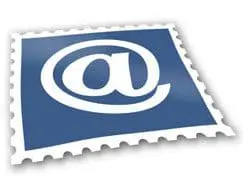This is the second in a series of articles about email marketing strategies and best practices. See the first article here.
Remember the Cheshire Cat in Alice and Wonderland?
The Cheshire Cat said to Alice, “If you don’t know where you’re going, any road will take you there.” This is true in business, too. In fact, one could almost make a circular argument:
Without clear goals, there’s no need to measure anything; without measuring, there is no way to know if the work you’re doing is helping to achieve your goals.
You need to set goals for your email marketing. Doing so, enables you to identify the specific measurements of your success.
Start with a primary goal and build from there. Trying to do too much with a limited number of contacts runs the risk of abusing your list and turning off your audience before you even have a chance to build a relationship with them.
What is your primary goal?
The first step is defining your primary goal:
- Do you want more names added to your list?
- Do you want to inform and educate your audience?
- Do you want to renew relationships with your audience?
- Do you want to introduce new services or products, or enhance your brand and reputation?
- Do you want more sales?
Of course, you say, I want it all! Sure! We all do. But you need to identify your PRIMARY goal. It may be one of the above, or it may be something entirely different. The important thing is to select ONE primary goal for your email campaign. Once you have your primary goal in mind, you can easily create email marketing messages that support that goal.
Different types of email marketing messages
eNewsletters
The easiest and most effective way to build relationships with members of your audience is to prove you know what you’re talking about. A newsletter distributed via email — an eNewsletter — provides the opportunity to establish yourself as a creative leader in the film industry by publishing regular articles on topics and trends in your area of expertise. An email newsletter is the perfect marketing tool to inform and educate your audience while building relationships with them. In essence, you’re giving your audience something they want, and they respond by giving you their attention.
The amount of content in your eNewsletter is up to you. It can be as concise as a single short article you’ve written on a topic they are interested in, or it could be as complex as a collection articles with “read more” links directing them to your website to continue reading.
Look for opportunities to re-purpose other marketing content for your eNewsletter. Articles that highlight you or your company, a new employee, or an upcoming event can all be crafted into eNewsletter content.
Remember that your newsletter is a marketing tool. Always include links to your website with additional content. Also include links to your social media pages to make it easy for your audience to connect with you and follow you. You might want to include a call-to-action like “Signup for my webinar”, or “Download our eBook”, or “Request a free demo.” Create opportunities for your audience to interact with you, your team, your content, and your videos.
Finally, “share” icon should be strategically placed within your eNewsletter to readers can easily spread and evangelize your content across their social media networks. And don’t forget the “Send this email to a friend” link.
Email offers
 These can be very effective if done well and not used too frequently. Email offers help you increase sales and maximize exposure by offering discount pricing and/or bonus incentives. Lowering the price of your service for the next 72 hours, or offering a free eBook when they purchase your product are examples of this type of email marketing. HOT TIP: do not use the term “buy now”, as it is a red flag for spam filters.
These can be very effective if done well and not used too frequently. Email offers help you increase sales and maximize exposure by offering discount pricing and/or bonus incentives. Lowering the price of your service for the next 72 hours, or offering a free eBook when they purchase your product are examples of this type of email marketing. HOT TIP: do not use the term “buy now”, as it is a red flag for spam filters.
Event Invitations
Event invitations are email marketing campaigns used to drive traffic to a specific online or off-line event, such as:
- a special demo at a user group meeting
- attending a festival or conference
- award presentations
- hosting a webinar or video chat
These emails are straightforward and should include your branding along with the event details. Be sure to include all your social media links and the usual “Share” links to make it easy for your readers to share this invitation with their social media followers and friends.
If appropriate, ask your readers to register for the event beforehand; this way, you’ll generate new names to add to your email list and have a record of attendance. Once they register, send a reminder email the day before the event.
These three type pf emails can easily be crafted to build a comprehensive email marketing strategy. As you build these different types of emails, be sure to save them — they can be templates for future emails, saving you time and creative juices. 🙂
Your Email Marketing Strategy
In future articles, I’ll be discussing these important parts of an effective email marketing strategy:
- Defining your goals
- Managing your email list
- Creating compelling content
- Best practices for email marketing
- Email on mobile devices
- Measuring your results
- Maximizing your content
By packaging what you know into engaging email content, you extend an invitation to begin a mutually beneficial relationship that results in an ever-growing audience, more exposure, more views of your films, and more merchandise sales.





